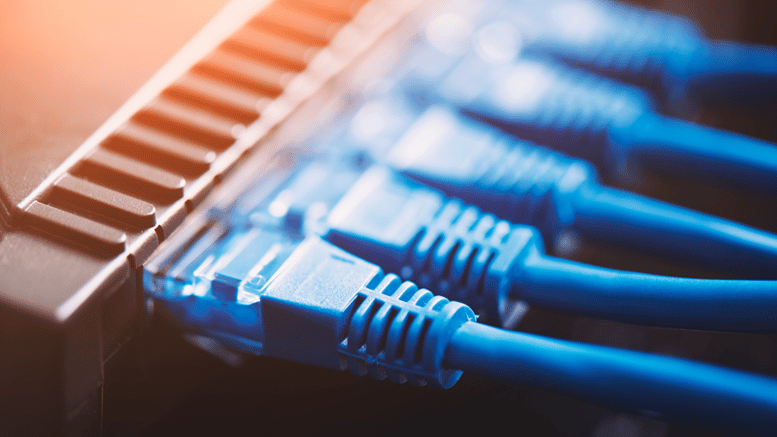Optimize Router Performance with DATAPROBE's Power Cycling Solutions

Maintaining a stable internet connection is crucial for both personal and professional activities. However, even the most reliable routers experience connectivity issues from time to time. Fortunately, there's a simple solution that often resolves such issues: power cycling your router. But what does this term actually mean—and how does it differ from a standard reboot?
This article will teach you how to reboot your router, explain what the process entails, and highlight the benefits of this common troubleshooting technique.
What Does Power Cycling a Router Do?
Power cycling a router involves turning the router off and then back on again, effectively restarting the device. This process is different from simply hitting the reset button or rebooting the router through its web interface. When you power cycle a router, you are completely cutting off the power supply to the device, allowing it to clear its cache and reset any temporary issues that might be causing connectivity problems.
What does it mean to power cycle a router? Essentially, this is a method to refresh the router’s system and reset its network settings. When you turn off the router, it stops all ongoing processes and clears its memory. This resolves many common issues, such as dropped connections, slow speeds, and failure to connect to the internet.
Will Unplugging My Router Reset It?
Unplugging your router is a form of power cycling. When you unplug the router, you disconnect it from its power source, causing it to shut down completely. However, it's essential to follow some specific steps to ensure an effective reset:
- Turn off the router using its power button before unplugging it—this ensures a proper shutdown.
- After unplugging the router, wait at least 30 seconds before plugging it back in to allow its memory to clear completely.
- Restart the router by plugging it back in and turning it on.
Following these steps will ensure the router resets correctly, which improves the chances of resolving any connectivity issues.
Keep in mind that unplugging your router does not perform a factory reset. A factory reset will restore your router to its default settings, erasing any custom configurations you may have set up, such as network names, passwords, and port forwarding settings. Power cycling restarts the device without altering these settings. This makes power cycling a safe first step in troubleshooting connectivity issues, as there is no risk of any changes to your network configurations.
What Does It Mean to Cycle the Power of Your Router?
Cycling the power of your router is another way to describe the process of power cycling. It involves the same steps: turning off the router, waiting for a few seconds, and then turning the router back on.
How to Restart a Router Remotely
Some modern routers offer the capability to perform a power cycle through a web-based interface or dedicated mobile app or by using a remote reboot device. This function is useful if your router is located in a hard-to-reach place or if you are in a different location and need to reset your connection.
To restart a router remotely, you typically need to log into the router’s control panel using your web browser, the app, or the remote power cycle device. Once you’re logged in, look for an option to reboot or restart the device. Although this method does not cut the power supply entirely, it effectively restarts the router, which should resolve minor connectivity issues.
What Are the Benefits of Power Cycling a Router?
Power cycling a router offers several benefits, making it the go-to solution for many common network issues:
- Restores Internet Connectivity: If your router has lost connection to the internet, power cycling may help re-establish the connection by resetting the device and clearing any network errors that may have occurred.
- Improves Network Performance: Over time, routers may become sluggish due to memory leaks or overloading from continuous use. By power cycling your router, you allow it to start fresh, which may improve overall performance and speed.
- Resolves IP Address Conflicts: Sometimes, devices on a network end up with conflicting IP addresses, which leads to connectivity issues. Power cycling the router helps resolve these conflicts by refreshing the IP address assignments.
- Clears Temporary Glitches: Routers, like any other electronic device, may experience temporary glitches or bugs. Power cycling helps clear these glitches.
- Restarts Software Updates: If your router is in the middle of a firmware update or if an update has failed, power cycling will restart the process. This ensures your router has the latest software for optimal performance.
If you're wondering how to reboot a WiFi router to resolve connectivity issues, power cycling should be your first course of action. It’s a simple, quick, and effective way to fix many common network problems without the need for technical expertise.
Conclusion
Power cycling a router is a simple way to troubleshoot and resolve various connectivity issues. By understanding what it means to power cycle a router and how to perform the process correctly, you’ll be able to clear temporary glitches, resolve IP address conflicts, and improve overall network performance. Whether you’re experiencing slow speeds or dropped connections or you simply want to refresh your network, power cycling is a safe and easy solution.
Ready to take control of your network's performance? Contact Dataprobe to learn more about advanced remote power reboot solutions and how they will benefit your business.
CATEGORIES
- About Dataprobe
- Best Sellers
- Broadcast
- Costs of Downtime
- Digital Signage Fail
- Education
- Home post
- iBoot
- iBoot Cloud Service
- iBoot-PDU
- iBootBar
- Industry News
- Internet of Things
- iPIO-8
- New Products
- Product Integration
- Product News
- Redundancy Switching
- Security
- Support
- Tips and Tricks
- Uncategorized
- Unique Applications





